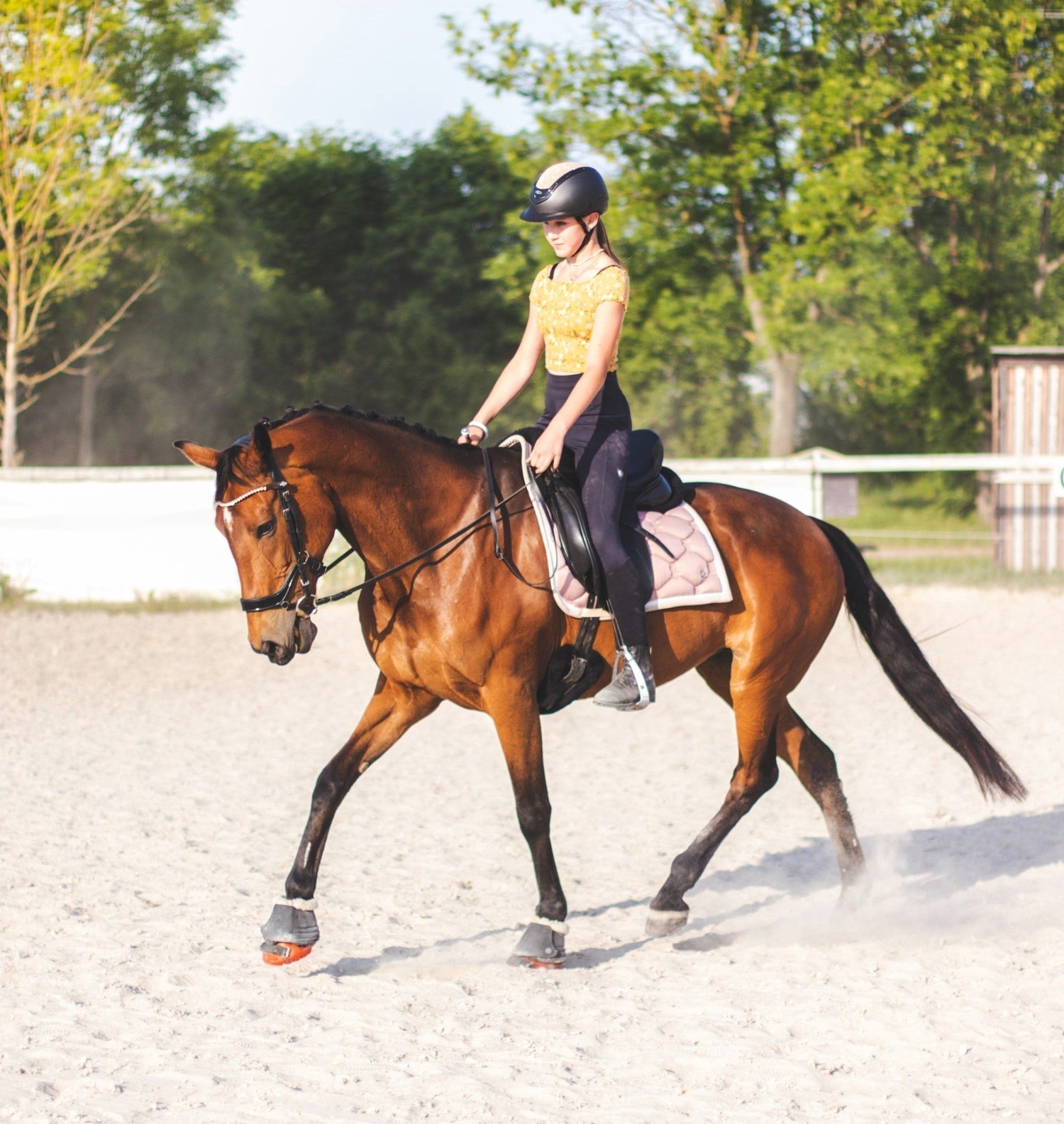Insights from Anna at GoBarefootHorse.com
Maintenance barefoot hoof trim vs. correction trim
While regular maintenance trims can help prevent problems from developing, corrective trimming may also be needed from time to time to address underlying problems and help your horse’s hooves recover from pathologies and be healthy and sound. Regularly interacting with your trimmer and monitoring your horse’s hooves can help ensure that your horse is receiving the proper care.
A maintenance trim is performed on horses whose hooves are in good condition and have no significant problems or imbalances. The goal of a maintenance trim is to keep the hooves in proper balance, maintain healthy hoof structures and prevent problems from developing. During a maintenance trim, the trimmer removes excess growth and balances the hoof wall and sole. A maintenance trim should not cause soreness or sensitivity after trimming.
A correction trim is needed when the horse's hooves have significant problems or imbalances, such as a long toe, contracted and/or underrun heels, or other structural problems. The goal of corrective trimming is to address these problems and bring the hooves back into balance. This may require more extensive trimming, such as removing more material from certain areas of the hoof or reshaping the hoof to correct imbalances.
Note: After corrective trimming, some horses may be sensitive or change their balance and require bodywork and gentle stretching to help their body readjust more quickly.
In some pathological cases, corrective trimming is necessary to completely correct the underlying problem and restore the horse’s balance. However, an experienced and skilled barefoot trimmer using modern barefoot trimming techniques is usually able to correct certain problems with a minimum of discomfort to the horse.
Why is regular trimming for barefoot horses important?
It is important to prioritize regular hoof care to ensure the health and well-being of your horse.
Neglecting hoof trimming, hoof balancing - or taking too long a break between trims - can lead to a number of hoof problems, including imbalanced weight distribution, abscesses, hoof cracks, white line separation, infections, lameness - and sometimes even laminitis.
In addition to issues in the horses hooves, painful or unbalanced hooves can directly create to injury, or compensation in the body, which can both significantly affect the horse’s performance, wellbeing, and their quality of life.
How often should my barefoot horse be trimmed?
For each individual horse the recommended trimming period will depend on various factors. In general, it is better if the time between trims is shorter, but in reality, most barefoot domestic horses with moderate activity and conventional lifestyles tolerate 3-5 weeks between trims quite well.
However, the exact frequency of trimming depends on the individual horse’s hoof growth and rate of wear, the terrain on which the horse is ridden, and the type and frequency of work the horse does.
The rate of hoof growth can vary depending on age, breed, general health, foraging and even season. For example, young horses and horses with certain medical conditions may require more frequent or less frequent hoof trimming because the rate of hoof growth differs from the average.
Another important factor to consider when the horse appears to be growing little horn or the hooves are severely worn is the hoof balance that is still present. Even if the horse's hoof walls appear short and do not require hoof trimming, it is still wise to check and balance the hooves regularly, because unbalanced hooves are a direct path to injury or compensation in the body, which can significantly affect the horse’s performance and quality of life.
It’s important to work with a qualified hoof care specialist to determine the best trimming schedule for your horse. The hoof care specialist should be able to evaluate your horse’s hooves and make recommendations based on your horse’s individual needs and adjust them over time.





